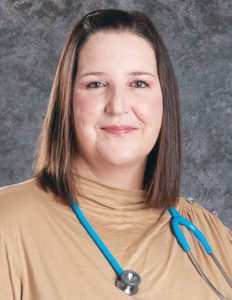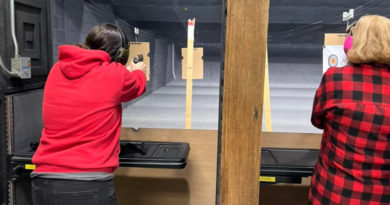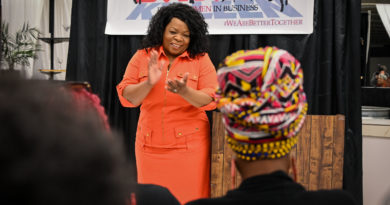COVID & Kids: Educators, health care professionals cite the emotional cost of disease
By Fred Afflerbach | Photos by Eric Larson of Temple ISD and Becky Stinehour
The coronavirus is an ongoing threat to young and old, having taken about 850 lives in Bell County in the last two years. But aside from the heartbreaking statistics and daily headlines, there is a narrative that has largely remained untold: The coronavirus has had an insidious effect on children that can’t be measured with hard data.
Nurses, teachers and school administrators all tell a similar story of how COVID-19 has for two years upended the lives of students from kindergarten through high school: Missing assignments and missing students. Large increases in the number of office visits to counselors and nurses. More referrals to mental therapists. Frayed nerves leading to more emotional outbursts leading to more physical confrontations.
Lack of motivation. Students losing focus, unable to see the point of education when their home life has been turned upside down. Learning gaps that teachers had to hustle and fill in. Graduating seniors feeling no closure to 12 years of public education. Fear of the unknown, which makes learning more difficult. An uptick in obesity and abuse at home. And the loss of what may seem like a trivial thing but can have a considerable impact — hugs and smiles.

“COVID beat us up,” said Rohonda Black, a counselor at Cater Elementary in Temple. “I don’t hug as much. Most of the kids, if they’re from kindergarten to second grade, they have not seen my face because I have my mask on. So I have to do a lot of things with my eyes. I lost a lot of my non-verbal. And that’s a lot of our communication. I’m speaking with parents a lot more who are concerned about their child’s mental state. I have a lot more parents calling in asking, ‘Where are resources? I think my child needs to see someone. They may be depressed.’”
For those worried about how many students have recently contracted COVID-19, Temple Independent School District maintains a dashboard, updated daily, that reports the latest figures. Anyone can go online and find the number of positive test results for the previous week. Numbers are updated daily, Monday-Friday. Killeen ISD has a similar dashboard.
Kim Glawe, director of health services at Temple ISD, says office visits to nurses districtwide have jumped from 4,841 in January 2020 (pre-COVID) to 8,017 in January 2022 — almost a 65% increase.
“Some of that is obviously COVID related. The other part is we see a lot of kids with increased anxiety, and we have kids who emotionally are a little behind because they’ve been out of school, especially during that time when we had remote learning,” Glawe said. “A lot of times health services provide that safe environment where we can educate the students and talk with them about their fears. We have to do more of that, redirecting, educating about COVID, what mitigation strategies we’ve been using. Talking with their families. And showing them that the things we’ve put in place have been effective. And when they see that, then it kind of brings that level of anxiety, for parents, community and the students, to a safe level.”
Back in spring 2020, when schools switched to remote learning only, one high school student completely lost touch. Temple High math teacher Andrea Perurena made contact once with the student’s mother, but after that no one at home would pick up the phone. With the student falling further behind, Perurena took an extraordinary step. She found him at his workplace. “I went over there. And he was all smiles, perfectly fine,” Perurena said. “If I hadn’t known where he worked, or if (the business) remained closed, I would have lost contact with this kid.”
When schools reopened in fall 2020, some students attended class in person while others continued to learn from home. This made many people unhappy. The new normal was there is no normal. Face masks. Social distancing. One-way hallways. Teachers say they had to learn how teach in a new way. The school that kids left behind was no longer there.
‘MOURNING LOSS OF NORMALCY’

Over at a Baylor Scott & White clinic in Killeen, pediatrician Dr. Jamie Avila has treated kids with myriad side-effects from COVID. She says, aside from the ones who contract COVID-19, the biggest effect the virus has on kids is that they’re “mourning the loss of normalcy.” Children are missing out on vital years just to play, hang out and live stress free.
Then there’s what she calls the other pandemic.
“In 2020, when you had what turned into eternal spring break, and then lots of schools going virtual . . . they were physically distancing from their friends, from their family, sometimes their support systems like their churches,” Avila said. “You had that break in the continuity of their learning. Just a huge amount of economic disparity. What kids could access technology. Who had the tablets. Who had connectivity issues. We had people skipping their wellness checks, missing their normal immunizations because they didn’t want to leave their house, so we had kids that weren’t going to speech therapies, or physical therapies.”
Avila says you can a follow a straight line from all these side effects to a huge increase in office visits from children.
“Just the sudden, direct increase in need for mental health. Something along the lines of 32% of kids with some sort of mental health diagnosis have come out of this pandemic just over the last few years,” Avila said. “And you can directly correlate it back to the things that have happened over the last two years.”
FORGING AHEAD
Yet among all the fear, anxiety and sadness for the loss of a few formative years for kids, a picture of fortitude and determination has played out in area schools. Teachers, administrators and nurses remain determined to forge ahead, regardless the unforeseen twists and turns and shapes of new variants that will surely come their way. They see a silver lining, such as how some students’ grades have actually improved with online learning and some families have bonded with more at-home time together.
Temple ISD’s chief of communications, Christine Parks, said teachers and staff have pulled together to mitigate COVID’s effect to their campus. And although in some aspects the students’ world has been turned upside down, young people are resilient and good at adapting to a new education landscape.
“They will come out strong on the other side of it, but there will be an impact. There are some things that will forever be changed because of this pandemic,” Parks said. “But they’re fighters and will continue to work hard.”
Temple ISD COVID Dashboard
https://www.Temple ISD.org/apps/pages/index.jsp?uREC_ID=2437316&type=d&pREC_ID=2232093
Killeen ISD COVID Dashboard
https://www.killeenisd.org/dashboard




